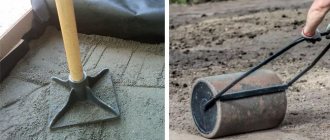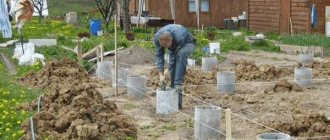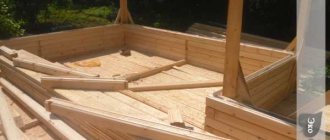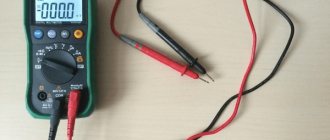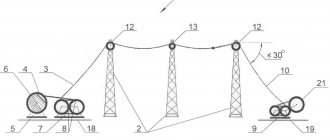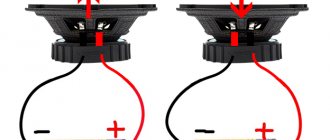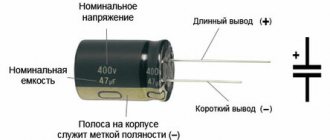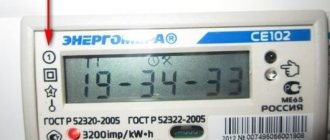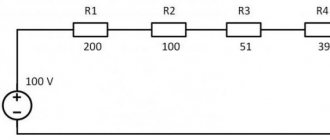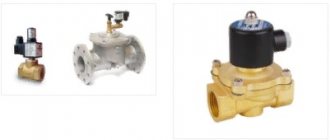Heaving soils are the number one problem for builders. In winter, when the cold comes, they increase in size, compressing the foundations and lifting them. As a result, cracks appear on the structure of the latter. They fight this phenomenon in different ways, but to start the fight, you need to understand what it is.
Types
What is heaving and non-heaving soil is a question that can be answered if you understand why such processes occur inside the soil. The thing is that expansion (heaving) occurs due to water drops frozen inside the soil . This means that she must retain these drops within herself.
Therefore, the main properties of the soil that lead to heaving are capillary activity and the ability to filter water. If the soil is loose, for example, with a high sand content, then water easily passes through it into the lower water horizons without being retained. Such soils do not belong to the category of heaving soils.
But those types of soils in which water is retained are classified as “heaving”. These are clay, loam and sandy loam. But there is a point related to capillary activity. For sandy types it is lower, because sand absorbs precipitation to a depth of 30 - 40 cm. At the same time, clay types gradually absorb moisture to a depth of 1.5 m. Therefore, in the first case, you can get by with blind areas around the foundation with a width of 1 m, in the second, the value will have to be increased to 1.5 - 2.0 m. This relates to the question of how to deal with heaving.
At a high level of groundwater, even non-heaving soils can expand. Therefore, soil heaving must be treated from the point of view of the presence or absence of factors that lead to such a property of the earth. You can also add the location of the house here. If it is being built on a site with a slope, then there is a high probability that such terrain will lead to heaving of some sections, especially those located below.
Let’s not forget about the region where the house is being built. If this is the south, where the level of soil freezing is low, then there is no need to talk about heaving.
Even clay bases covered with a standard blind area can easily withstand low temperatures in winter. In the north this is expressed more clearly. In some northern regions, the ground freezes to 2 - 2.5 m, which means that soil heaving occurs regardless of the type of soil.
How to determine the degree of soil heaving on your own
The phenomenon of soil heaving, which occurs as a result of frost heaving (an increase in volume when a mass of soil saturated with water freezes) is very common and dangerous for the foundations of low-rise buildings and cottages. Almost all soils lying on the territory of our country during winter freezing are susceptible to this phenomenon: wet and moisture-saturated dusty, fine sandy and clayey soils (clays, loams, sandy loams). Only the degree of heaving of different soils differs.
Why does a developer need to know what degree of heaving the soils have on his site? This is very important before starting the construction of a low-rise building, since the choice of a type of foundation (strip, column, pile or slab) that would be maximally adapted to the soil and geological conditions of a given construction site depends on this.
If you underestimate the danger of this phenomenon and lay an inappropriate foundation, then due to the low weight of a low-rise building, the forces of frost heaving (normal and tangential) can literally push it to the surface, which will entail uneven deformation of the foundation, and with it the entire structure .
So, according to the degree of heaving, soils are divided into:
- non-heaving – there is practically no heaving;
- slightly heaving – heaving from 1 to 4%;
- medium heaving - heaving from 4 to 7%;
- highly heaving - heaving from 7 to 10%;
- excessively heaving – heaving more than 10%
These percentages mean that, for example, with a freezing depth of 1.4 m, for medium heaving soil (we take the worst option), the heaving will be: 1.4 x 7/100 = 0.098 m, i.e. 9.8 cm.
Determining the degree of soil heaving
The degree of soil heaving can be determined:
• according to their physical characteristics (according to the results of laboratory tests);
• independently
Contents
hide
1 Determining the degree of heaving of soils based on their physical characteristics 1.1 How to determine the fluidity index JL of clayey soils yourself
1.2 How to determine the groundwater level (GWL) on a site yourself
1.3 Dependence of the degree of heaving of soils on their freezing depth and groundwater level (GWL)
1.4 Dependence of the degree of heaving of clayey and sandy soils on the fluidity index (for clayey soils), freezing depth and groundwater level (GWL)
2 You may also be interested in:
Determination of the degree of heaving of soils based on their physical characteristics
In the event that the developer has on hand data from laboratory tests of soil samples taken from the construction site, which describe the granulometric (grain) composition of sandy and coarse soils and the degree of their moisture, as well as the plasticity number J p and the fluidity index J L of clayey soils soils, then the degree of soil heaving can be determined using the following table:
| Degree of heaving | Heaving deformations or relative frost heaving at a freezing depth of 1.5 meters | Types of soils |
| Non-heaving | <0,01 or ≤1% | Clayey at JL < 0 (hard loams and clays, hard sandy loams); Gravelly sand, coarse and medium size with a particle content of up to 0.05 mm (fine and sandy) up to 2%, regardless of humidity; Gravelly sand, coarse and medium- sized with a particle content of up to 0.05 mm (sandy small and fine) up to 15% with S r ≤ 0.5 (low moisture); Fine sand with a particle content of less than 0.05 mm (silty and clayey) up to 2% at S r ≤ 0.5 (low moisture); Coarse soils with filling (clayey, fine sand and dusty) up to 10% |
| Low heaving | 0,01-0,035 or 1÷2% And 2÷4% | Clayey at 0 ≤ JL ≤ 0.25 (semi-solid loams and clays; plastic sandy loams); or Light coarse sandy loam with low moisture content (heaving 1÷2%); Light coarse sandy loam, wet (heaving 2÷4%); Low-moisture silty loam; Sandy loam is light, low-moisture; Heavy silty loam with low moisture content; Sand is gravelly, coarse and medium with a particle content of less than 0.05 mm (silty and clayey) up to 15% wet and saturated with water; Fine sand with particles less than 0.05 mm in size (silty and clayey) up to 2% moist and saturated with water; Fine sand with a particle content of less than 0.05 mm (silty and clayey) from 2% to 15%, low moisture (heaving 1÷2%) and wet (heaving 2÷4%); Sandy sand with S r ≤ 0.5 (low moisture); Coarse soils with filling (clayey, fine sand and dusty) from 10 to 30% |
| Medium heaving | 0,035-0,07 or 4÷7% | Clayey at 0.25 JL ≤ 0.5 (tight plastic loams and clays; plastic sandy loams); or Sandy loam is light, moist and saturated with water; Sandy loam, heavy, silty, low-moisture; Light silty loam with low moisture content. Sand is silty and fine at 0.8 < S r ≤ 0.95 (saturated with water); Coarse clastics with filler (clayey, fine sand and silt) more than 30% by weight |
| Highly heaving | >0,07 or 7÷10% | Clayey at JL > 0.5 (soft-plastic and fluid-plastic clays and loams and plastic sandy loams); or Sandy loam is silty (moist and saturated with water); Sandy loam heavy silty (wet); Light silty loam (moist); Heavy silty loam (moist and saturated with water) Sand is silty and fine with S r > 0.95 (saturated with water) |
| Excessively heaving | >0,1 or >10% | Clayey at JL > 1.0 (fluid loams and clays and fluid sandy loams); Light silty loam (saturated with water); Heavy silty sandy loam (saturated with water) |
Determining the degree of soil heaving yourself
To independently determine the degree of soil heaving at a construction site, you need to know the following data:
• soil composition;
• groundwater level at the site;
• depth of soil freezing in the construction area.
How to determine the composition of the soil yourself in the absence of geology, see the material “How to determine the composition of the soil on your own.”
Why is it so important to know the composition of the soil on the site? As mentioned above, the territory of our country is mainly covered by soils that are more or less prone to frost heaving: clayey soils - clays, loams, sandy loams, as well as sandy soils - sands of various sizes (gravelly, coarse, medium-sized, fine and dusty).
Since most of these soils have a significant content of dust and clay particles, they bind water well and are saturated with it. When soil saturated with water freezes in winter, it expands significantly and increases in volume, which leads to its uneven rise, “swelling.”
It is this phenomenon that is called “frost heaving of the soil.” It occurs, as a rule, in moisture-saturated and damp silty, fine-sandy and clayey soils (sandy loam, loam, clay).
This is also facilitated by the so-called “capillary activity” - the ability of various, especially clay and fine sandy soils to draw water from significant depths to the surface, which very much depends on the amount of dust particles in the composition of these soils: the more dust particles, the greater the activity.
“Thanks to” the capillary effect, clayey and fine sandy soils are capable of drawing water from the groundwater level (GWL) closer to the surface of the earth by the following amounts:
- clay – 4 ÷ 5 meters;
- loams – 2 ÷ 3.5 meters;
- sandy loam – by 1.5 ÷ 2 meters;
- silty sands – by 0.7 ÷ 1.2 meters.
The degree of heaving of clay and sandy soils depends on the following characteristics:
• for clayey soils (sandy loam, loam, clay) - on the fluidity index JL , as well as on the depth of the groundwater level , or rather, on the difference in the groundwater level and the depth of soil freezing;
• for sandy soils - on the depth of the groundwater level , as well as on the degree of saturation with water ;
It should be noted that in coarse-grained soils (crushed stone, gravel and pebbles), as well as in coarse-grained, coarse and medium-sized sands that do not contain clay and dust particles or contain very little of them (up to 2%), capillary activity is practically absent.
This means that water does not rise above the groundwater level (GWL). Such soils remain moist strictly at the level of groundwater level and are considered non-heaving.
How to determine the fluidity index JL of clay soils yourself
| Consistency of clay soils | Turnover rate J L | Signs |
| Sandy loam | ||
| – hard | J L<0 | Upon impact, the sample breaks into pieces. When squeezed strongly in the palm, it crumbles into small particles, turning into dust. |
| – plastic | 0≤ J L≤1 | The sample is easily kneaded in the hands and retains its given shape after molding. Moisture is felt when squeezed in the palm; often sticky. |
| – fluid | J L>1 | The soil sample does not retain its given shape and spreads. |
| Clays and loams | ||
| – hard | J L < 0 | Upon impact, the sample breaks into pieces. When squeezed strongly in the palm, it sometimes crumbles into small particles; turns to dust when rubbed. You can barely press your fingernail into the sample. |
| – semi-solid | 0 ≤ J L ≤ 0.25 | The cut block of soil breaks without noticeable bending. Rough particles are visible on the fracture surface. It crumbles when kneaded in the palm. You can press the nail in without much effort. |
| – hard-plastic | 0.25< J L≤0.5 | The cut block of soil bends noticeably even before breaking. You can knead a piece of soil with noticeable effort. The finger is pressed into the sample only with strong pressure. |
| – soft-plastic | 0.5 < JL≤0.75 | The soil sample is wet to the touch. A piece of soil not only kneads easily, but also retains its shape. The finger is pressed into the sample a few centimeters with light pressure. |
| – fluid-plastic | 0.75< J L≤1 | The soil sample is very wet and sticky to the touch. It kneads very easily in the palms, but retains the shape given to it. |
| – fluid | J L>1 | The soil sample feels very wet to the touch. It does not retain its given shape when molded. If you place it on an inclined plane, it flows in a thick layer. |
How to determine the groundwater level (GWL) on a site yourself
You can determine the groundwater level in your area yourself. To do this you will need the following tools:
Garden auger
- garden drill at least 2 meters long;
- spoon drill , allowing you to drill a hole to a depth of at least 5 meters;
- a rod of sufficient length to measure groundwater level.
In order to determine the groundwater level (GWL) at the construction site, you first need to drill a hole about 2 meters deep with a garden auger. If, after one day, water does not appear in the pit, then using a spoon drill it is necessary to drill a hole another approximately 1.5 ÷ 2 meters. After water appears in the well, measure the distance from the ground surface to the groundwater level with a rod or a regular bar, on which marks in centimeters are pre-marked.
Dependence of the degree of heaving of soils on their freezing depth and groundwater level (GWL)
As mentioned above, clay and sandy soils, “thanks to” the capillary effect, are capable of drawing water from various depths to the surface of the earth. It is this ability that determines their degree of heaving depending on the difference in groundwater levels and the depth of soil freezing.
Non-heaving soils
Non-heaving soils are soils if the depth of soil freezing is above the groundwater level (GWL) by the following amount:
- for fine sands - by 0.75 m or more;
- for silty sands – by 1.0 or more;
- for sandy loam - 1.5 m or more;
- for loams - 2.5 m or more;
- for clays - 3.0 m or more.
Slightly heaving soils
Slightly heaving soils are soils if the depth of soil freezing is above the groundwater level (GWL) by the following amount:
- for fine sands – by 0.5 ÷ 0.75 m;
- for silty sands – by 0.75 ÷ 1 m;
- for sandy loam – by 1 ÷1.5 m;
- for loams – by 1.5 ÷ 2.5 m;
- for clays – by 2.0 ÷ 3.0 m.
Medium heaving soils
Medium heaving soils are soils if the depth of soil freezing is above the groundwater level (GWL) by the following amount:
- for fine sands – by 0.5 or less;
- for silty sands – by 0.5 ÷ 0.75 m;
- for sandy loam – by 0.75 ÷ 1.0 m;
- for loams – by 1.0 ÷ 1.5 m;
- for clays – by 1.5 ÷ 2.0 m.
Heavily heaving soils
Strongly heaving soils are soils if the depth of soil freezing is above the groundwater level (GWL) by the following amount:
- for silty sands – by 0.5 or less;
- for sandy loam - 0.75 m or less;
- for loams - 1.0 m or less;
- for clays - 1.5 m or less.
Example:
Soil – loam;
Groundwater level (GWL) – 3.2 meters from the ground surface;
Soil freezing depth – 1.2 m
3.2 – 1.2 = 2.0 m – slightly heaving loam.
Dependence of the degree of heaving of clayey and sandy soils on the fluidity index (for clayey soils), freezing depth and groundwater level (GWL)
Let us summarize the data obtained earlier when determining the degree of heaving of soils into one table:
| Degree of soil heaving | Distance Z, m | JL turnover rate | Relative frost heaving, % | ||||
| Clay | Loam | Sandy loam | Dusty sand | Fine sand | |||
| Non-puffy | Z>3 | Z>2.5 | Z>1.5 | Z>1 | Z>0.75 | JL<0 | ≤ 1 |
| Slightly heaving | 2 | 1,5 | 1 | 0,75 | 0,5 | 0≤JL≤0.25 | 1 – 4 |
| Medium heaving | 1,5 | 1 | 0,75 | 0,5 | Z≤0.5 | 0.25 | 4 – 7 |
| Heavily heaving | Z≤1.5 | Z≤1 | Z<0.75 | Z<0.5 | – | JL>0.5 | 7 – 10 |
Z is the difference between the groundwater level (GWL) and the depth of soil freezing.
In the event that the degree of heaving of clay soil determined by the J L indicator (laboratory or visual) differs from that established by the Z indicator, the option where the degree of soil heaving is greater is accepted (the worst option is taken).
You may also be interested in:
How to determine the composition of the soil yourself
Frost heaving of soil: impact on foundations
Dusty-clayey soils in construction
Classification
Classification of soils according to the type of swelling divides the types into several subgroups. Heaving ones include:
- Excessively or very heaving.
- Very heaving.
- Average.
- Weak degree.
And non-heaving soils stand separately.
The last definition can be called purely conditional, because there is no land that does not freeze and swell. It all depends on the soil moisture and its cooling temperature. Of course, we can say that purely stone soil will not swell. But this variety is extremely rare in places where people live. Usually these are mountains.
That is, it turns out that the type of soil does not greatly affect frost heaving. The main reasons are soil moisture and air temperature. Therefore, the question of how to determine which soils are heaving and which are not is posed incorrectly. All of them can swell to some extent.
Frost heaving of soil
At a certain humidity, soils, freezing in winter, increase in volume, which leads to a rise in soil layers within the limits of their freezing depth. This process is called frost heaving of soil, and soils are called heaving.
Foundations located in heaving soils are subject to heaving, i.e. move upward if the loads acting on them do not balance the heaving forces. As a result of such soil deformations, loads arise in the foundation, leading, for example, to the appearance of cracks in the walls of the building and the foundation itself.
Wrestling rules
The easiest way to combat soil heaving is to fill the foundation structure below the freezing depth of the ground. Since the soil presses on the foundation from all sides, the most dangerous pressure is vertical. To avoid this, you need to fill the structure so that nothing presses on it from below. And since the buried foundation is poured below the freezing level, there is therefore no frost heaving of the soil in its lower part. Accordingly, the structure will not rise.
There are other ways to fight:
- Waterproofing. It not only protects the foundation from the negative effects of moisture, but also creates an intermediate layer between the soil and the concrete structure, which impairs adhesion. In this case, the soil will partially slide over the surface of the foundation, which means the pressure on it will also decrease.
- Thermal insulation. This is still the same intermediate layer.
- Drainage. An effective way to lower the level of groundwater, which will reduce the concentration of moisture inside the soil at the depth of pouring the foundation structure.
- Blind areas . Here you not only need to maintain their width, but also try to insulate them. For example, pour a layer of expanded clay with a thickness of at least 15 - 20 cm under the concrete mortar. The blind areas serve as a drainage system for atmospheric precipitation, and the insulation will inhibit the penetration of low temperatures.
During the heaving process, horizontal loads also act on the foundation, which creates bending pressure. A dangerous factor that, if construction operations are carried out incorrectly, will tear the structure. A reinforcing frame made of metal reinforcement helps to avoid this trouble. Here it is important to make an accurate calculation, taking into account the dimensions of the metal profile and the dimensions of the frame itself.
It’s easier if a shallow foundation is poured under the house , which is built above the freezing level of the soil. To protect it from heaving, you just need to lay a blind area with insulation and insulate the base . When the groundwater level is high, drainage is also carried out.
If the building is being constructed in the northern regions, then the entire foundation must be insulated: from the base to the upper edge of the base.
The influence of heaving soils on foundations
Frost heaving causes a significant increase in its volume - the amount of surface rise can amount to more than tens of centimeters. In this case, forces arise, the magnitude of which reaches tens of tons. Even if you lower the base of the foundation below the depth of seasonal freezing, this will not prevent the negative influence of heaving forces, since they also act on the side surfaces.
The heaving of the soil is also manifested in the fact that after the foundation thaws during warming, it settles, that is, the structure of the foundations is periodically affected by multidirectional forces.
The weight of structures can compensate for heaving only if a building is constructed at least three floors high with massive concrete or stone walls. For low-rise buildings of one or two floors, especially those made of lightweight structures - wooden frames and logs, lightweight concrete blocks and bricks - a special foundation for heaving soil must be selected and calculated.
The main danger of the negative impact of heaving forces lies in their unevenness. Different parts of the foundations of a building are always in different conditions. Freezing occurs only along the perimeter of the heated building; under the foundation on which the middle walls rest, the base does not freeze.
Uneven freezing under the building
In addition, along the perimeter of the enclosing external walls, the base freezes unevenly - on the shady, northern side there is more freezing, on those sides where the sun warms up there is less freezing. The amount of freezing is also affected by the thickness of the snow cover, the architecture of the building, and the nature of the development of the site.
All these factors cause uneven impact of heaving forces on different sections of foundations and uneven deformations in structures, causing the most unfavorable consequences - the occurrence of cracks and other damage in enclosing and load-bearing structures, which can lead to their destruction.
The foundation on heaving soils must have features that can minimize or eliminate the negative impact of this type of foundation.
